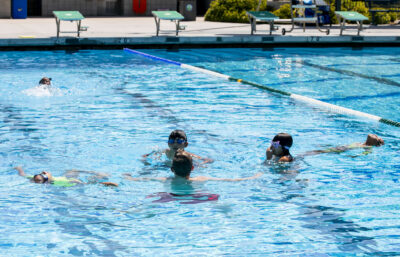Car crashes are one of the last things in the world that drivers want happening to them when they get behind the wheel, but unfortunately, they still happen quite regularly. Data estimates show that well over a million people lose their lives every year as a result of traffic collisions, making them a leading cause of fatalities worldwide. However, there are also many accidents that don’t result in death but which are nonetheless very detrimental for the victims, either because of the physical injuries that can take a lot of time to heal, the mental health damage that can leave you unable to set foot inside a car ever again, or the financial damage resulting from having to deal with the repairs.
The good news is that there are several ways to prevent these accidents from happening in order to ensure that you’re safer on the road, but the methods and things you need to keep in mind will vary depending on the type of accident you’re trying to prevent. Here are some of the most likely situations you need to be prepared for.
Avoid being rear-ended
Rear-end collisions range from the very mild, which do little more than scrape the paint of the car, to the severe, which can end in a burning wreckage. They are among the most common types of automobile accidents in the US, accounting for almost 30% of all cases. There are several reasons why these crashes occur, including panic stops, brake checking, being distracted, and tailgating. Sometimes, they are also the result of diminished traction, which happens because of worn pavement or bad weather. When traffic volumes are elevated, rear-ending is much more likely to happen, and you’re also at higher risk when you’re around stop signs.
There are many situations in which the fault lies entirely with the other party, and in this case, you are within your rights to demand compensation. Get in touch with a solicitor who can handle your situation and ensure you obtain the maximum amount of remuneration that you are entitled to. The sum you will be eligible to receive will depend on the type and extent of your injuries, so if you had to deal with serious health damage, you will naturally receive more as part of your recovery. Special compensation may be awarded to you if you had to travel to a different city or even country in order to receive treatment, causing the bills to pile up, or if you suffered a loss of earnings due to being in recovery post-accident.
While rear-end collisions tend to be minor and are less likely to result in fatalities, they can still cause plenty of damage. To avoid them, make sure to maintain a safe following distance at all times, especially in traffic. Keep an eye on the brake lights and the road signs at all times so that you have plenty of time to react. Don’t become distracted by your phone, the stereo, or anything else while driving, as it only takes a second for a crash to happen. Moreover, you need to avoid making sharp turns or stops and always make sure that your signals and intentions are clear. If you’re being tailgated, you should let them by as soon as possible; otherwise, you should just continue driving.
T-bone
A T-bone is an accident in which the front of a vehicle crashes head-on into the side of another. They are more likely to happen at intersections, and the most common reason is the failure to follow the correct right of way. Some motorists also run a red light or otherwise ignore traffic laws, resulting in T-boning another car. Some T-bone accidents can end up being deadly because the side of a vehicle fundamentally has less protection than other areas.
The severity will largely depend on additional factors such as the safety features the car is equipped with, the exact point of impact, and the speed of the vehicle. Those who are seated on the side of a car that has been hit and damaged are naturally at the highest risk. Being aware of your surroundings at all times is essential, and be particularly mindful of intersections. Make sure the coast is clear before you cross, even if the light happens to be green. You should never assume that there’s no potential hazard just because of that.
And never look at your phone when you’re at a red light, since being distracted makes it more likely for you to be impacted by someone else’s distracted driving.
Object collisions
In some instances, traffic collisions aren’t the result of two cars crashing into each other but occur when a driver hits a fixed object. This can be a curb, a pole, shrubbery, a guard rail, a parked car, or even a building. In more serious situations, animals, pedestrians, or cyclists may be hit, with the injuries often being severe, while the individual or people in the negligent vehicle will typically be unscathed. The most common culprit in these cases is impaired driving, whether it is the result of substance consumption or abuse, feeling tired or drowsy while driving, or becoming distracted.
Check your tyres, wheels, and brakes regularly to ensure everything is in order, and make sure the road and your surroundings have your full, undivided attention at all times. If you start feeling unwell or realise that you cannot focus properly, pull over right away. Driving within the legal limits and being careful is a must at all times, but especially when the conditions are not the best for driving, such as when visibility is low, the roads are wet, or there’s ice.
Most drivers don’t even want to imagine the possibility of being involved in a car accident. At its best, a collision will just be inconvenient for your day and result in a few scrapes on your car, a mild scare and annoyance. However, severe occurrences can result in massive damage to the vehicle as well as potentially life-threatening injuries. While being careful and following the rules won’t make you 100% accident-proof, it can still hugely improve your odds and make driving a much safer experience overall.






